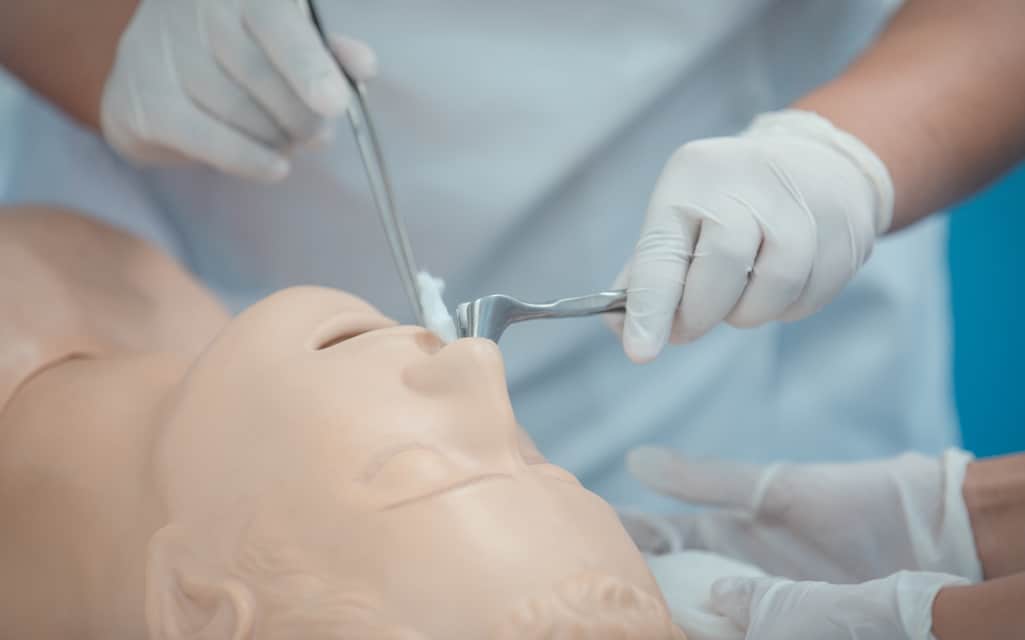Revision rhinoplasty is no small feat and may have required a painstaking decision on your part. Your experience with your previous surgeon may have even caused you to lose faith in the procedure. But with skilled surgeons behind you this time, previous damage can be parlayed and you can be well on your way to the new you you’ve been waiting for
Rhinoplasty, or a nose job, is a fairly complicated surgical procedure on its own that requires attention to the different structures of the nose and the unique relationship between them.
The upper part of the nose is bone, the lower part is cartilage, and having a nose surgery may change one or both of those. Cartilage is often removed during this procedure, and it may be a difficult task to decide just how much needs to be taken off. How the patient heals through the process can have an effect on the outcome, and for one reason or another, not all nose jobs end up positively. In such cases, revision surgery is needed.
What is revision rhinoplasty for?
Revision rhinoplasty, or secondary rhinoplasty, is a second procedure undertaken with the chance to correct what went wrong or what you didn’t like about the first procedure. It’s looking to improve upon or repair functional or cosmetic problems of the nose that are a result of the previous surgery, so extra care must be taken. Dr. Mark Glasgold, a NJ-based expert in revision rhinoplasty, notes that any revision technique involves accurately replacing missing structure(s) and repositioning cartilage to produce a nose that is aesthetically pleasing in both size and shape.
It’s often necessary to replace or add cartilage to fortify the structure, add stability, and improve the overall appearance. Cartilage is shaped into structural and sewn into pieces that serve that purpose. These grafts can be used to either build up or straighten sections of the nose. They may also be used to replace missing cartilage.
So where does the cartilage come from?
Types of Grafts
There are many grafting materials available, though it’s often considered best to replace missing or scarred structures with similar tissue. These may come from one of three categories: alloplastic implants, autogenous non-synthetic, and homologous non-synthetic.
Alloplastic implants have been created either completely synthetically or produced by extensive chemical processing of animal tissues. There is a high possibility that the patient’s immune system could launch an immune response, damaging the surrounding tissue and possibly rejecting the graft.
Homologous non-synthetic implants are natural cartilage tissue that has been harvested from a donor and irradiated. There could also a risk that the tissue will be rejected, though newer techniques are showing promise for fresh frozen, non-irradiated allografts as a viable source.
Autogenous non-synthetic implants are grafts that have been taken from the patient’s own body. In the case of Revision Rhinoplasty, that is typically from the septum (nose), ear, or rib. This is the gold star standard for several reasons:
- Decreased chance of rejection
- Flexibility
- Can be positioned in areas where there is little soft tissue coverage
- Minimal inflammatory response
- Low rates of resorption and infection
- Long-lasting results of shape and size
In most cases, this is the type of graft you’ll receive. Once it’s harvested, the surgeon will painstakingly shape and sew the cartilage pieces together in the desired form. Slippery, rubbery, and with a mind of its own, this tissue is not easy to work with.
Cartilage From the Septum
Using cartilage that originates in the nose seems like it would be a no-brainer for a nose job, right? Septal cartilage is usually the graft of choice, especially in cases where the nasal structure needs to be given rigidity and support. The reality is, though, that in the case of Revision Rhinoplasty, often there just isn’t enough of that septum tissue remaining, so surgeons have to look towards other places.
Cartilage From the Ear
Cartilage from the ear can be harvested very easily with little risk of an ear deformity. The cartilage here is very pliable, and its thickness is variable, offering the surgeon a chance to choose just how much to take. Good options for harvesting include the concha and tragus, the little blip on the front of your ear opening.
Cartilage From the Ribs
Costal cartilage provides large quantities of available cartilage. It’s generally taken from the sixth or seventh rib. While there is plenty available, this option is usually the last choice of surgeons, given the possibility of more side effects and complications such as post-operative pain, scarring, pneumothorax, and chest wall deformities. The tissue, itself, can be associated with warping of the end result. With older patients, the cartilage may have already begun hardening, making it more difficult to work with, if not altogether impossible.
Going in and revising a previous surgery site is a difficult task that requires a certain amount of care and a great deal of skill. Your surgeon’s choice of cartilage comes from years of experience, research, and a thorough examination of you, the patient. The choice of where it comes from is the culmination of multiple factors. Trusting your surgeon to make the right choice can help to relieve some of the stress you may be experiencing.



